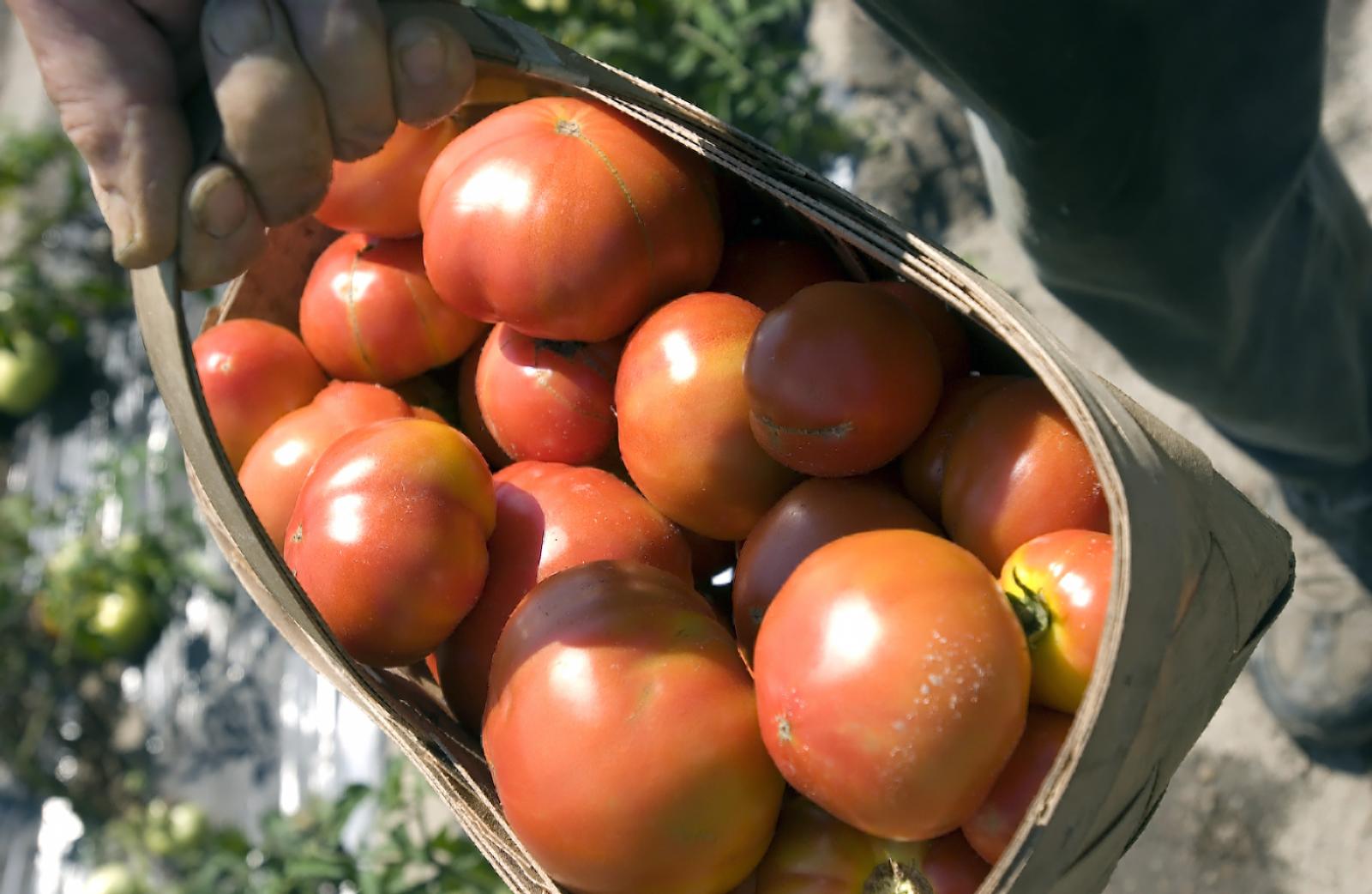If I were a tomato, I would want to be a porch tomato. It is a lesson which took only 15 months, about $50 and a bowl of bruschetta on a warm summer evening to learn.
Last June I became the Gazette farm and field columnist. My task: write a weekly column on Island farms and the men and women who work them. The closest thing I had as qualifying experience was a Christmas cactus, which on more than one occasion was nursed back to life after a period of negligence. It is not well cared for. But after owning it for 10 years, bright pink buds still appear at the ends of its branches each December like clockwork. The whole thing becomes its own bouquet.
This spring, as a second season of articles on soil, salad greens and slaughtering chickens loomed, I decided I needed more experience than a Christmas cactus. While the weather was still cool enough for sweatshirts, I drove over to the Community Solar Greenhouse for their annual spring sale. The soft smell from the thyme and rosemary plants drifted into the parking lot.
Herbs seemed like a good place to start. A pot of rosemary for fish, a basil plant for pesto and chives for scrambled eggs and to chop into salads. And then there were the tomatoes, the plants which give COMSOG, an organization celebrating its silver anniversary this year, its reputation. The greenhouse aisles teemed with heirlooms of all kinds: Green Zebras, Rose de Bernes, Big Rainbows that promised, come August, sweet tomatoes of all shapes, sizes and in shades of bright orange, butter yellow and deep, dark purple. Cherry tomatoes, husk ones, the options overwhelmed. Thalia Scanlan, president of COMSOG and an avid heirloom grower, offered her advice. I told her the situation: my credibility was on the line. I needed to grow something and I was moving, but not for a few weeks, into a summer rental with what was rumored to be good soil. The plants would have to survive the move.
I also confessed that I had killed every plant I had owned except the Christmas cactus.
Without hesitation, Mrs. Scanlan showed me a tomato plant. It was the porch tomato, a trusty tomato, she said. No need to put it in the ground, no need to coddle it. It won’t turn out purple tomatoes or striped ones, but come July, its vines would consistently blossom with small, red tomatoes, the kind you think of when you picture a tomato.
I bought my herbs, my tomato plant and a jalapeno pepper plant for good measure. Under instruction from Heidi Feldman of Down Island Farm, I went to SBS for organic Neptune’s Harvest fish and seaweed fertilizer ($10.99). Liz Thompson gave reassuring directions — just add a capful to a jug of water and every few weeks, water the plants.
The sunroom in my winter rental became a makeshift greenhouse and a few weeks later, when we moved to Oak Bluffs, my roommate came home with heirloom tomato plants (an Earl of Edgecome, a Celebrity, a Black Krim), a habanero pepper plant, okra, rhubarb, eggplant, purple basil and a few bell pepper plants. She bought netting and green gardening clogs and put her plants in the ground.
My porch tomato stayed on the porch.
When summer hit, all available free time for weeding and fertilizing disappeared beneath the weight of work schedules. The purple basil wilted in the hot sun, the Black Krim only produced rotten tomatoes.
But the porch tomato thrived, just as Mrs. Scanlan promised. Besides the Krim, the others did all right too, but they required more tending and a battle with slugs. At one count, 35 tomatoes were ripening in the backyard. But the porch tomato was the trustiest of them all. It was low maintenance, tough and always dependable.
As August came to a close, the porch tomato was on a roll. A bowl on the counter had more tomatoes than we knew what to do with. So on an evening when the humidity hung heavy in the air, we chopped the tomatoes with plenty of raw garlic, the basil from outside which had not wilted and added just enough olive oil and balsamic vinegar so as not to lose that true tomato taste which is never found in the mealy, flavorless ones from Stop and Shop. We opened a cheap bottle of wine, toasted slices of a Morning Glory baguette loaf and sopped up every last bit of the bruschetta, the fruit of our labors.
This column is meant to reflect all aspects of agricultural activity and farm life on the Vineyard. To get in touch with Julia Rappaport, please call 508-627-4311, extension 120, or e-mail her at jrappaport@mvgazette.com.




Comments
Comment policy »